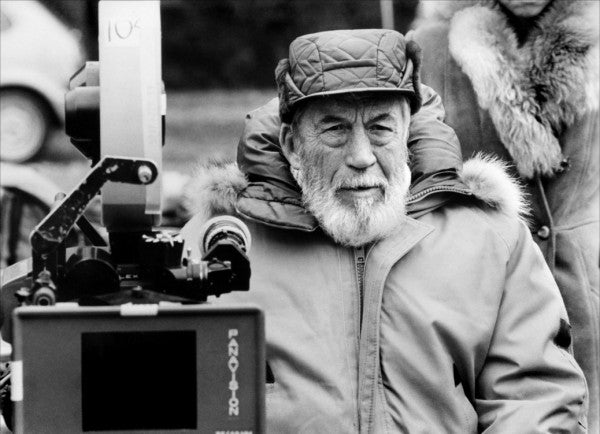
What I Learned From Ten Famous Directors
I’ve been privileged to work with many great and famous directors over the years. With some of them I had only a brief brush with greatness, and some I worked for extensively and collaborated with on a daily basis for many years.
Here’s what I learned from some of the greats.




ROBERT WISE
is famous for directing The Sound of Music, West Side Story, and The Day the Earth Stood Still. So when I got the call to shoot the first four minutes of Star Trek I was obviously very excited. I probably had an idea in my mind that a great director like Robert would have a larger-than-life persona, one as charismatic as the characters in the movies he has directed. But Robert was a very friendly, unassuming man and he didn’t change this persona while directing. I learned that a great director uses the content of his mind and well thought out ideas to direct, not the force of his personality.JOHN FRANKENHEIMER
directed one of my favorite movies, Grand Prix, and also Ronin. I worked for him one afternoon shooting a screen test with a young actor, John Savage. I can’t remember what movie it was for, but I don’t see John Savage on Frankenheimer’s IMDB, so I’ll assume the test didn’t work out! I saw John give very little direction to an actor who gave a really good performance. I learned to “let the actors act”.
JOEL SCHUMACHER
was essentially a first time director when I shot The Incredible Shrinking Woman for him, but he had written Car Wash which was a big hit at the time, and had been a costume designer for Woody Alan. Joel went on to direct many large features including The Phantom of the Opera and Batman Forever. Joel was an extremely open individual and told me all about himself, good and bad, at our first meeting. I learned from him that personal relationships are one of the most important aspects of this business. Also that succeeding in other creative jobs in the business is a great help in becoming a director.JOHN HUSTON
directed The Maltese Falcon and The African Queen and had an acting career that was equally epic. I shot the title sequence for his movie Prizzi’s Honor. He directed from a wheelchair and had a bottle of oxygen on board with some tubes in his nose. He was very specific about the amount of time he wanted a shot to last and listened intently as I described the shot I had just made for him. No video assist in those days! I learned not to listen to anyone who tells you your directing career is over at sixty.
STANLEY KUBRICK
well, I went into detail on in a previous blog, but I guess what I learned from Stanley was to have Persistence of Vision. I watched him sustain his for two and a half years on 2001: A Space Odyssey, and that was just during production and didn’t include the three years of writing and development.SYDNEY POLLACK
directed Out of Africa, Tootsy, and The Firm. I worked with him for two nights on a documentary about Aretha Franklin and gospel music in Watts, California. I had not seen a director of his caliber shoot a documentary before. It has since become a very controversial project. I learned that if you have passion for the subject matter, it doesn’t matter what form it takes.
JONATHAN DEMME
had just directed a movie for Roger Corman called Caged Heat. I was shooting a picture for Roger called Crazy Mama when the director fell out. Jonathan was hired to replace him – on this film for which he had not prepped. I learned that there is no substitution for preparation! Jonathan went on to direct Silence of the Lambs and the Manchurian Candidate. It seems that those pictures were planned very well, so I’m guessing he learned the same lesson.GEORGE LUCAS
is one of the most innovative directors that I’ve worked for. He came up with the concept of the “Rip-a-matic” – an idea that has now been replaced with an entire department called “Pre-Vis.” Back then, George took footage from The Dambusters, Tora Tora Tora and more to create his battle sequences with existing flying moves. It enabled the Visual Effects to be done with precision and efficiency. I learned that just because someone hasn’t done something before, doesn’t mean it’s a bad idea.


Leave a comment